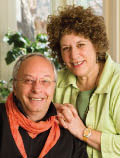Meditation is vastly misunderstood. It is thought to be something that religious people do. It is not that. Rather, it is a way to relax the mind and make sense of our life, something we can all benefit from.
There are probably very few people who have never experienced stress. It can happen in a minute or it may build over time. It can spur creativity but is more likely to leave you irritated, depleted, and even physically ill.
The word stress is a derivation of the Latin word stringi, whose meaning is to be drawn tight, which is pretty much how most of us feel. The words meditation and medication have the same prefix derived from the Latin word medicus, meaning to care or to cure, indicating that meditation is likely to be the most effective and efficient remedy for a busy and overworked mind. Which is why meditation is the greatest gift you can give both yourself and your stress!

Meditation is simple: just calm the mind, pay attention to the present moment and be still. But it is not always so easy.
The mind is notoriously resistant to being quiet and as soon as we try to be still it seems to do everything it can to distract us. Within a few minutes our thoughts are wandering, our body starts to itch, ache, or want to move, we remember things we need to do that suddenly seem vitally important, and because we are so distracted, we feel inadequate and believe that meditation is not for us.
Maybe this sounds familiar: My mind is too busy; I can’t sit still; I can’t relax; my mind will not get quiet; my thoughts are driving me mad; I can’t possibly meditate! This is because our mind tends to be all over the place like a monkey chasing different scenarios, so that our ability to be completely here and now is challenged. Although being aware of the present moment is simple, we have spent so many years covering it up with all sorts of distractions that now we have to practice being still in order to reconnect with it.
Being Present
Stillness is actually a natural state of being; it is what is there when we stop trying, when we release the story. Learning how to be quiet and calming the body takes patience and perseverance. As we continue, it will begin to feel more natural and ordinary. Remember, music needs to be played for hours to get the notes right, while in Japan it can take twelve years to learn how to arrange flowers. Being still happens in a moment, but it may take some time before that moment comes—hence the need for practice. Almost everything we do in life is to achieve something: If we do this, then we will get that; if we do that, then this will happen. We are not used to doing anything without an agenda. But in meditation we do it just to do it. Like a child watching an ant walking down the sidewalk carrying a crumb, that ant is all that exists in their world at that moment. They are not thinking about what they had for breakfast, or what they will do with their best friend at their next play date. They are only watching the ant.
There is no ulterior purpose to practicing meditation other than to be here, in the present, without a goal of succeeding, of trying to get anywhere or achieve anything. If our purpose is to try to achieve a quiet mind, then the trying itself will create tension and failure. Instead, we are just with whatever is happening in the moment, whether it is pleasant or unpleasant. No judgment, no right or wrong. Watching whatever arises and letting it go is all that is required. It is more of an undoing than a doing.
When we let go of the story and the dramas and stop trying, then we discover an inner easefulness. Some people describe this as a sense of coming home, as if they had been away or out of touch with themselves without having realized it; others experience it as a huge relief as there is a release of anxiety and self-centeredness. Personally, we don’t know how we would function in this mad world without it!
Preliminaries
When you first make the decision to start meditating it is vital that you do not set your goals too high. Sit in a comfortable chair and start with just ten minutes a day. There is no need to sit cross-legged in an uncomfortable position or to try and do thirty or forty minutes. It is far more important that you make friends with meditation. It will be of no help at all if you feel you have to meditate, for instance, and then feel guilty if you miss the allotted time or only do ten minutes when you had planned to do thirty. It is much better to practice for just a few minutes and to enjoy what you are doing than to make yourself sit there, teeth gritted, because you have been told that only thirty minutes will have any affect.
Meditation is a companion for you to have throughout your life, like an old friend we turn to when in need of direction, inspiration, and clarity. As such, it is to be enjoyed.
In order for meditation to be a friend it helps to have a time specifically for practice, such as when you first get up or before going to bed. If you are a morning person, you may prefer to practice it first thing, as that is when you are more awake and focused, but for others it is impractical and a later time in the day works better. You know whether you are a morning or an evening person. And you know the quietest time, maybe when the kids are still asleep. If it is in the evening it helps to do some stretching or moving first in order to release any physical stress. It is easy to think meditation is difficult if you are trying to be still but your body is full of tense energy.
You are going to be the one practicing and it is much more important that you are happy about what you are doing than doing it according to someone else’s specifications. You are not practicing to prove anything. It is just there for you to connect more deeply with yourself, your sanity, and your freedom. And, like learning any new activity, it takes time to get to know the ropes.
There are various techniques that can help us to be still, but these are not about trying to achieve anything or to develop special powers, and no one technique is necessarily any better than the other. Although the methods may differ they all point to the same place, which is the cultivation of awareness, the most direct form of which is just watching the natural in-and-out flow of the breath. This internalizes our awareness; it focuses our attention on the inner world rather than the outer one. It also develops mindfulness of our body, thoughts, and feelings.
Getting Started
Breath Awareness meditation is also known as calm abiding (or shamatha) and is the most direct form of sitting practice. You simply follow the breath as it enters, watch it dissolve and merge into every cell, and then follow the breath as it leaves, watching it dissolve and merge into the cosmos. You are not trying to change the breath or to breathe more slowly or purposefully. Your mind might become distracted and wander off into different thoughts, but the breath is always there to bring you into the present moment. You constantly come back to that flow.
To Recap
Meditation is simply letting the mind rest and be still. To do that, it helps to give the mind something to do, such as watching the flow of the breath, or counting each breath. If thoughts fill your mind just see them as thoughts and let them go. There is no right or wrong way to practice, and no way that you can “fail” at meditation. Just set a time aside for ten to fifteen minutes where you sit quietly with no distractions. Watch your breath come and go. Do not expect that you can stop thinking – that would be like trying to catch the wind. Just focus on being aware of your breath and let your mind do whatever it wants to. Whatever happens is your meditation.

Breath Awareness Meditation
Sitting with a straight back is especially important for meditation, as you need to be able to breathe easily and freely. Hands are resting in the lap. Eyes are closed or lowered. Establish your posture and take a deep breath and let it go.
Now bring your attention to the rhythm of the breath. Let your breathing be normal and relaxed, your attention still and focused. If you find you are getting distracted or caught up in thinking, simplify your thoughts as distraction and let them go, or see them as birds in the sky and let them fly away. Do this for at least ten minutes. Just breathing and being.
When you are ready, take a deep breath. Gently open your eyes.
Here are further instructions for this practice to enable you to focus more fully on the breath, rather than getting distracted or restless:
1. You can focus your attention on one of three places, whichever is most natural to you: either on your nose tip where the breath actually enters and leaves; in the center of your chest; or in the belly, about an inch below your navel. If you feel restless or get caught up in your thinking, then bring your attention to the breath in the belly; conversely, if you are getting sleepy or soporific, then bring your attention to the breath at the nose tip.
2. To help deepen your concentration, silently count at the end of each out-breath: breathe in, breathe out, one; breathe in, breathe out, two; continuing to count in this way up to ten, and then starting at one again. If you lose the count or go beyond ten, just start at one again.
3. Alternatively, with each in- and out-breath, you can silently repeat, “Breathing in, breathing out.” This keeps your mind flowing with the breath.
Keep doing this and soon your mind will get the picture and begin to quiet down. When that happens, you will find yourself in a wonderful and peaceful place. Enjoy
 Ed and Deb Shapiro are the authors of the book: Be The Change, How Meditation Can Transform You And The World, and winners of the 2010 Nautilus Gold Book Award. They are featured spiritual teachers on prestigious websites. They have three meditation CDs: Metta – Loving Kindness and Forgiveness; Samadhi – Breath Awareness and Insight; and Yoga Nidra – Inner Conscious Relaxation. Deb is the author of the bestselling book: Your Body Speaks Your Mind, a winner of the 2007 Visionary Book Award. www.EdandDebShapiro.com
Ed and Deb Shapiro are the authors of the book: Be The Change, How Meditation Can Transform You And The World, and winners of the 2010 Nautilus Gold Book Award. They are featured spiritual teachers on prestigious websites. They have three meditation CDs: Metta – Loving Kindness and Forgiveness; Samadhi – Breath Awareness and Insight; and Yoga Nidra – Inner Conscious Relaxation. Deb is the author of the bestselling book: Your Body Speaks Your Mind, a winner of the 2007 Visionary Book Award. www.EdandDebShapiro.com







